A sandstorm in verdant Belarus; floods in the desert of Kazakhstan; sandstorms that blot out Beijing and forest fires in Siberia's early spring.
Welcome to the new Abnormal
Epic storm turns day into night in Belarusian city (VIDEO)
The epic storm was created by a cold front on the Ukrainian-Belorusian border that later reached the Carpathian Mountains in an event that is quite rare for this time of the year. Meteorologists called the natural phenomenon a “haboob,” which means an intense red dust storm in Arabic.


Beijing
residents had to wear face masks and goggles to protect them
The
bad visibility seriously disrupted traffic, causing large traffic
jams all over the capital.
Welcome to the new Abnormal
Epic storm turns day into night in Belarusian city (VIDEO)
An “apocalyptical” storm swept through several regions in Belarus, including the capital. But it was in the city of Soligorsk where clouds as black as ink obscured the sun light, while strong winds ushered in a sand storm
RT,
16
April, 2015
An
“apocalyptical” storm swept through several regions in Belarus,
including the capital. But it was in the city of Soligorsk where
clouds as black as ink obscured the sun light, while strong winds
ushered in a sand storm.
Soligorsk
residents, about 120 kilometers from the capital Minsk, were both
scared and excited by the weather phenomenon that hit Belarus on
Monday. At around 17:00 local time, darkness descended on the city
with over 100,000 residents opting to stay indoors.
People
reportedly had to move around several districts with flashlights. The
storm’s heavy rains led to electricity being cut off, trees falling
down and damage to buildings.
The
country’s Emergency Ministry reported about 46 communities in the
Minsk region suffered various kinds of damage. The capital city was
also hit by storm force winds and torrential rain, but no emergency
situations were reported.
The epic storm was created by a cold front on the Ukrainian-Belorusian border that later reached the Carpathian Mountains in an event that is quite rare for this time of the year. Meteorologists called the natural phenomenon a “haboob,” which means an intense red dust storm in Arabic.
Thousands
evacuated from flood areas in Kazakhstan
15
April, 2014
Floods
in Karaganda Oblast continue to wreak havoc as Kazakh authorities are
forced to evacuate dozens of settlements, Tengrinews reports
citing the Oblast's Department of Emergency Situations. 1,760 houses
have been flooded in 35 villages. 340 livestock have drowned.
A sharp rise in temperature to 20 degrees Centigrade between March 23 to 29 intensified the melting of snow and caused flooding of villages in Semey and Ayagoz districts in East Kazakhstan Oblast and of four districts in Karaganda Oblast.
A sharp rise in temperature to 20 degrees Centigrade between March 23 to 29 intensified the melting of snow and caused flooding of villages in Semey and Ayagoz districts in East Kazakhstan Oblast and of four districts in Karaganda Oblast.
The
second wave of floods began on April 6 as a result of another sharp
rise in temperatures, again to 20 degrees Centigrade, creating a
threat of flooding of settlements in Karaganda and Akmola Oblasts in
central Kazakhstan. Moreover, the threat now extends to Astana
suburbs located near the riverbed of Nura.
 ©Aisulu
Bushtayeva
©Aisulu
Bushtayeva
On
April 11, Jumabek dam near the village of the same name was partially
washed away by the meltwater and the water started flooding the homes
of local residents, the Emergency Situations Department of Karaganda
Oblast informed.
All in all, 17 homes were flooded in the area, 42 people evacuated and hundreds of livestock driven away.
 ©Aisulu
Bushtayeva
©Aisulu
Bushtayeva
All in all, 17 homes were flooded in the area, 42 people evacuated and hundreds of livestock driven away.
“To
carry out rescue operations and mitigate the consequences, fire
service and rescue teams of the Department of Emergency Situations of
Almaty and Karaganda Oblasts were dispatched," said the press
service of the Department of Emergency Situations.
In addition to the Almaty rescuers, 138 soldiers of the military unit number 52859 of the Ministry of Defense and military unit number 5451 of the National Guard helped in the operation.
 ©Aisulu
Bushtayeva
©Aisulu
Bushtayeva
In addition to the Almaty rescuers, 138 soldiers of the military unit number 52859 of the Ministry of Defense and military unit number 5451 of the National Guard helped in the operation.
The
Department of Emergency Situations added that meltwater scoured some
of the roads in the area, especially in lowlands in Zhanaarkinskyi
and Abai districts.
 ©Aisulu
Bushtayeva
©Aisulu
Bushtayeva
The
village of Aksu in Shet district saw all of its 150 residents
evacuated after the Sherubai-Nur river spilled out of its banks.
All
the villagers of Zhastlek in Bukharzhyrau district were evacuated,
too - 24 houses were flooded.
In
the village of Saken Seifulin everybody was evacuated together with
their livestock.
100
people were evacuated in Abay district. They were temporarily settled
in a school building. Rescuers are erecting sand dams to save
villages and towns from getting flooded.
It is also reported that the threat of flooding is hanging over Sarytobe village. All 350 villagers were taken on a train to a school building in the nearby Kokpekty village.
 ©Aisulu
Bushtayeva
©Aisulu
Bushtayeva
It is also reported that the threat of flooding is hanging over Sarytobe village. All 350 villagers were taken on a train to a school building in the nearby Kokpekty village.
In
the village of Yntaly of Karkarala District, 148 homes and 150
barns remain flooded. 718 people were evacuated.
Rescuers from Almaty and an operational-rescue team from South Kazakhstan Oblast arrived to help the regional services battle the disaster.
Strengthening and building of dikes is underway in all the settlements. Observation posts have been put in place to monitor the situation. Water is being pumped away from the houses. Protective dams are being constructed.
 Photo
courtesy of Pavlodar Oblast Department of Emergency
Situations ©Valery Bugayev
Photo
courtesy of Pavlodar Oblast Department of Emergency
Situations ©Valery Bugayev
Rescuers from Almaty and an operational-rescue team from South Kazakhstan Oblast arrived to help the regional services battle the disaster.
Strengthening and building of dikes is underway in all the settlements. Observation posts have been put in place to monitor the situation. Water is being pumped away from the houses. Protective dams are being constructed.
"The
flood control works involve more than 1,500 people, including
representatives of local authorities, the Department of Emergency
Situations, Department of Internal Affairs and military units. Around
300 vehicles are being employed in the operation," the internal
policy department of Karaganda Oblast informed.
A regional operational headquarters was set up by the Oblast akim Nurmukhambet Abdibekov. Similar centers are working in every village affected by the floods.
"4070 people have been evacuated by the local authorities, the Department of Emergency Situations, the Department of Internal Affairs and military units to school buildings and hotels. Many citizens are staying with their relatives or have moved to other localities. 2,578 head of cattle, 1280 heads of small cattle and 153 horses have been driven away," the Domestic Policy Department reported.
 ©Tengrinews
©Tengrinews
A regional operational headquarters was set up by the Oblast akim Nurmukhambet Abdibekov. Similar centers are working in every village affected by the floods.
"4070 people have been evacuated by the local authorities, the Department of Emergency Situations, the Department of Internal Affairs and military units to school buildings and hotels. Many citizens are staying with their relatives or have moved to other localities. 2,578 head of cattle, 1280 heads of small cattle and 153 horses have been driven away," the Domestic Policy Department reported.
All
the households that have suffered from the floods have been
registered. The authorities promised to provide financial
assistance.
The floods in Karaganda Oblast destroyed several power transmission towers and cut off six townships in Nura District from power, the press service of the Oblast Akimat (local authorities) said. In addition, melt waters damaged 18 sections of roadways.
"Several bridges over the Kulanotpes river were destroyed by floating ice and rough water flow. Transport links to eight villages were cut off - Kenzharyk, Sonaly, Kulanotpes, Barshino, Zhanbobek, Tkenekty, Taldysay, Tassuat. Due to the collapse of several transmission towers, power was cut off in six villages - Zhukey, Sonaly, Kulanotpes, Nygman, Aktubek, Amantau," the press service said on April 14.
Flood waters entered the villages from Samarkand, Sherubai-Nura and Intumak water reservoirs.
"A rescue team with a boat was sent to the villages Sonaly and Kenzharyk to deliver five-day food supplies, fuel and a mobile diesel power plant to the residents of these villages," the press service said.
There were no reports of anyone getting injured or going missing in the floods.
Volunteers in Karaganda Oblast started collecting clothes and food for the victims of the floods. A group was organized in VKontakte to assist the victims by collecting clothing, blankets, bedding, basic products and shipping those to the evacuees.
 Photo
courtesy of Pavlodar Oblast Department of Emergency Situations
©Valery Bugayev
Photo
courtesy of Pavlodar Oblast Department of Emergency Situations
©Valery Bugayev
The floods in Karaganda Oblast destroyed several power transmission towers and cut off six townships in Nura District from power, the press service of the Oblast Akimat (local authorities) said. In addition, melt waters damaged 18 sections of roadways.
"Several bridges over the Kulanotpes river were destroyed by floating ice and rough water flow. Transport links to eight villages were cut off - Kenzharyk, Sonaly, Kulanotpes, Barshino, Zhanbobek, Tkenekty, Taldysay, Tassuat. Due to the collapse of several transmission towers, power was cut off in six villages - Zhukey, Sonaly, Kulanotpes, Nygman, Aktubek, Amantau," the press service said on April 14.
Flood waters entered the villages from Samarkand, Sherubai-Nura and Intumak water reservoirs.
"A rescue team with a boat was sent to the villages Sonaly and Kenzharyk to deliver five-day food supplies, fuel and a mobile diesel power plant to the residents of these villages," the press service said.
There were no reports of anyone getting injured or going missing in the floods.
Volunteers in Karaganda Oblast started collecting clothes and food for the victims of the floods. A group was organized in VKontakte to assist the victims by collecting clothing, blankets, bedding, basic products and shipping those to the evacuees.
In
Astana and Almaty as well, campaigns were launched to help the
victims of the flooding in Karaganda Oblast.
Prominent Kazakhstani political figures and opinion leaders, including Bakhit Syzdykova, Yerlan Karin, Bayan Yesentayeva and others, have voiced their support and helped organise an initiative group in Astana to collect things for the victims of the floods. One of the initiators of this campaign was a well known TV presenter Dinara Satzhan.
Prominent Kazakhstani political figures and opinion leaders, including Bakhit Syzdykova, Yerlan Karin, Bayan Yesentayeva and others, have voiced their support and helped organise an initiative group in Astana to collect things for the victims of the floods. One of the initiators of this campaign was a well known TV presenter Dinara Satzhan.
"I
learned about this from Instagram, the information is spreading. I
brought children's clothes, toys, women's and men's clothing. Almost
all of it is warm clothes because the weather is still cool. I feel
for the victims with all my heart. Wish them all good health and that
this does not happen again. I am from the south, from Almaty,"
said Indira, who, like many others learn about the campaign from the
Internet.
The collection began at 10 am in Saryarka mall today. People brought clothes, children's clothes, diapers, food, toys, personal care items, detergents, blankets. The first car will be sent to the ones most in need. The collection of things will continue until Friday.

The collection began at 10 am in Saryarka mall today. People brought clothes, children's clothes, diapers, food, toys, personal care items, detergents, blankets. The first car will be sent to the ones most in need. The collection of things will continue until Friday.
Satzhan
later wrote that the boutique, which collected the things became full
very fast, so the Mall allocated a warehouse for the purposes.
Entrance is from the sixth back door from the street of Saraishyk. A
special identification plate was put in place.
Social activist, ex-deputy of the Mazhilis Bakhyt Syzdykova also shared the posts of another initiative group @astana-dobro. They are also collecting at Sarayshik street 5/1, apartment 35, second entrance. Their contact numbers are 87078883689 and 87019938053.
Dina Sabirova organized a similar campaign in Almaty. The collection will continue from 15 to 19 April, from 2pm until 8 pm in the lobby of Arman cinema theater located at Dostyk Avenue 104 (corner of Abai avenue). Preserved, dried and freeze-dried foods, crackers, biscuits, crackers, salt, sugar, various cereals, baby food, disposable tableware, dry fuel, clothing, shoes and blankets, as well as boxes and tape to pack the collected items can be donated there.
Social activist, ex-deputy of the Mazhilis Bakhyt Syzdykova also shared the posts of another initiative group @astana-dobro. They are also collecting at Sarayshik street 5/1, apartment 35, second entrance. Their contact numbers are 87078883689 and 87019938053.
Dina Sabirova organized a similar campaign in Almaty. The collection will continue from 15 to 19 April, from 2pm until 8 pm in the lobby of Arman cinema theater located at Dostyk Avenue 104 (corner of Abai avenue). Preserved, dried and freeze-dried foods, crackers, biscuits, crackers, salt, sugar, various cereals, baby food, disposable tableware, dry fuel, clothing, shoes and blankets, as well as boxes and tape to pack the collected items can be donated there.
Humanitarian
aid will be sent by trucks to the affected areas in Karaganda Oblast.
Organizers of the campaign in Almaty, according to Sabirova, are in
direct contact with the people in the disaster area.
Other collection centers might also open in other cities under hashtags like #sborpomoschialmaty and #sborpomoschiaktobe. Such action groups can also be found under hashtags #sos_karaganda and #helpkaraganda.
Meanwhile, the flood menace continues to hang over more villages in Abay district. All the villagers of Dolinka, Koksu, Yubileinoe, Put Ilyicha, Zelenye Kliuchi and a number of other settlements in the area were taken to hotels, hostels or to stay with their relatives. Their number is around two thousand people.
 ©Tengrinews
©Tengrinews
Other collection centers might also open in other cities under hashtags like #sborpomoschialmaty and #sborpomoschiaktobe. Such action groups can also be found under hashtags #sos_karaganda and #helpkaraganda.
Meanwhile, the flood menace continues to hang over more villages in Abay district. All the villagers of Dolinka, Koksu, Yubileinoe, Put Ilyicha, Zelenye Kliuchi and a number of other settlements in the area were taken to hotels, hostels or to stay with their relatives. Their number is around two thousand people.
Meltwaters
also affected Pavlodar Oblast. According to the head of Department of
Emergency Situations of Pavlodar Oblast Alibek Dlimov, an emergency
was declared in the Oblast because of the flooding. The situation is
stable but the threat of flooding remains. In particular, on April 10
due to a large influx of water the village of Tendyk was flooded.
Insecurity remains in Aktogay district, where authorities are taking
preventive measures.
 Photo
courtesy of Pavlodar Oblast Department of Emergency Situations
©Valery Bugayev
Photo
courtesy of Pavlodar Oblast Department of Emergency Situations
©Valery Bugayev
"A
large inflow of water is expected today, we are taking measures to
divert the meltwater. 100 people have been evacuated. In Bayanaulsky
District, the threat of flooding has subsided, the evacuated people
have returned to their homes. 200 people are involved in the rescue
operation in the Oblast," he said on April 13.
Dlimov also spoke about the situation in Maykayin village. According to him, there had been a threat of flooding of four residential houses, but it was eliminated.
But the local residents have a different view.
"We are the citizens of new homes built under the state program "Affordable Housing 2020". Our homes were flooded, and it's not the first time. The housing was built in the marsh areas, the authorities did not want to help us," one of the local residents Aidan Bakibayeva complained.
She said that many residents had small children but it was impossible to return back into the houses, everything was soaked wet. For now they were forced to live temporarily with their relatives.
 Photo
courtesy of Pavlodar Oblast Department of Emergency Situations
©Valery Bugayev
Photo
courtesy of Pavlodar Oblast Department of Emergency Situations
©Valery Bugayev
Dlimov also spoke about the situation in Maykayin village. According to him, there had been a threat of flooding of four residential houses, but it was eliminated.
But the local residents have a different view.
"We are the citizens of new homes built under the state program "Affordable Housing 2020". Our homes were flooded, and it's not the first time. The housing was built in the marsh areas, the authorities did not want to help us," one of the local residents Aidan Bakibayeva complained.
She said that many residents had small children but it was impossible to return back into the houses, everything was soaked wet. For now they were forced to live temporarily with their relatives.
Meanwhile,
Deputy Minister of Internal Affairs of Kazakhstan Vladimir Bozhko
dispelled the rumors that the floods in Kazakhstan came as a surprise
this year. At a press conference in Astana on April 15, he said that
the forecast of Kazhydromet made in February suggested that the
amount of autumn moisture and winter snow exceeded the normal amount
by 30-40 percent in Akmola, Karaganda, North Kazakhstan and Kostanai
Oblasts. It was expected that the amount of water in the rivers of
Ishim, Silety, Shagalaly, Nura and Sherubai-Nur would be above
average, he said.
Therefore, starting from March 3 emergency response units of the Ministry of Internal Affairs numbering 8561 people and 1255 pieces of equipment, nine helicopters and 211 boats were put on high alert. In February and March 2015, 10 thousand tons of fuel were prepared for prevention and elimination of the consequences of floods. In addition, 188,000 tons of inert materials, 84 thousand million bags and 89 tons of explosives were readied.
According to the Deputy Minister, meltwater washed away or flooded 17.3 kilometers of roads in 89 sections. Five bridges were destroyed.
Bozhko explained that to prevent loss of lives 11,172 people were evacuated from danger zones in advance. In addition, during the period of high waters, 25 people were rescued from rooftops. Also more than 36 thousand heads of livestock were driven away from the endangered settlements to the high ground.
 Photo
courtesy of Pavlodar Oblast Department of Emergency Situations
©Valery Bugayev
Photo
courtesy of Pavlodar Oblast Department of Emergency Situations
©Valery Bugayev
Therefore, starting from March 3 emergency response units of the Ministry of Internal Affairs numbering 8561 people and 1255 pieces of equipment, nine helicopters and 211 boats were put on high alert. In February and March 2015, 10 thousand tons of fuel were prepared for prevention and elimination of the consequences of floods. In addition, 188,000 tons of inert materials, 84 thousand million bags and 89 tons of explosives were readied.
According to the Deputy Minister, meltwater washed away or flooded 17.3 kilometers of roads in 89 sections. Five bridges were destroyed.
Bozhko explained that to prevent loss of lives 11,172 people were evacuated from danger zones in advance. In addition, during the period of high waters, 25 people were rescued from rooftops. Also more than 36 thousand heads of livestock were driven away from the endangered settlements to the high ground.
He
added that a lot of equipment and vehicles was concentrated in the
settlements located on river beds. Dams were being constructed there
and round the clock monitoring of the water level was in place.
The danger of flooding still remains high.
Today, it became known that floods in Karaganda Oblast reached Temirtau, a town near Karaganda city. Meltwaters from Nura river flooded 54 houses in the town on Nizhniaya and Yuzhnaya streets. 22 people were evacuated, the other residents of the affected houses refused to be evacuated.
The Akim’s (Mayor's) office said that the water from the Nura river began spilling onto the road surface during the day on April 14. The emergency services arriving on the site the same day and began landfilling the roadside to create a barrier for the water flowing from the river. Once the artificial dam was erected, it allowed to contain a significant amount of water.
The local authorities assured that all those who suffered form the flooding would receive compensations from a reserve fund of the regional budget. The property in houses flooded houses is being guarded by the police.
By Dinara Urazova, editing by Tatyana Kuzmina
The danger of flooding still remains high.
Today, it became known that floods in Karaganda Oblast reached Temirtau, a town near Karaganda city. Meltwaters from Nura river flooded 54 houses in the town on Nizhniaya and Yuzhnaya streets. 22 people were evacuated, the other residents of the affected houses refused to be evacuated.
The Akim’s (Mayor's) office said that the water from the Nura river began spilling onto the road surface during the day on April 14. The emergency services arriving on the site the same day and began landfilling the roadside to create a barrier for the water flowing from the river. Once the artificial dam was erected, it allowed to contain a significant amount of water.
The local authorities assured that all those who suffered form the flooding would receive compensations from a reserve fund of the regional budget. The property in houses flooded houses is being guarded by the police.
By Dinara Urazova, editing by Tatyana Kuzmina
‘Sand-ageddon’:
Chinese capital hit by worst sand storm in decade
16
April, 2014
Traffic
came to a standstill during rush hour in Beijing on Wednesday as a
massive sandstorm covered the Chinese capital in thick blanket of red
dust, making internet users speak about the end of the world.
The
China Meteorological Administration issued a yellow sandstorm alert –
the third-most serious danger level – warning about a drop in
visibility to less than 1,000 meters and increased air pollution.
Some
areas in the city of 21 million recorded air pollution of nearly
1,000 micrograms per cubic meter, which is considered hazardous for
people’s health.
Massive sandstorm rolling into central Beijing, view from our office window:
Chinese
internet users were quick to label the weather phenomenon
‘Sand-ageddon,’ comparing it to the end of the world.
“It’s
very dirty, I feel like it is the end of the world,” one
of the users was cited by South China Morning Post.
Sandstorm in Beijing, it appears.
While
another person on social networks wrote that “it
feels like we are living in a desert. I wonder how we can survive
such bad weather.”
Despite
being far from the red danger level, Wednesday’s sand storm was the
strongest in the Chinese capital in 13 years.
Besides
Beijing, 11 other provinces in the north of the country were impacted
by the storm, which led to electricity blackouts and chaos on the
roads.
Sandstorms
are a common event in China in the spring, with the dust originating
from the outer edge of deserts in Mongolia, northern China and the
Hexi Corridor.
Sandstorm, smog, willow catkins and traffic. Just another day in Beijing...
Beijing
is considered among the most polluted cities in the planet, with
environmental watchdog Chinese Hazardous saying on Thursday that air
particles, which cause asthma and breathing problems, were more than
double the national target in the capital.
WORST
SAND STORM IN SAUDI ARABIA
Fires
in Transbaikal region of Siberia
Extreme
Weather: Utah Dust Storms and Nevada Sand Storms












 Steve George
Steve George










 Ben Ross
Ben Ross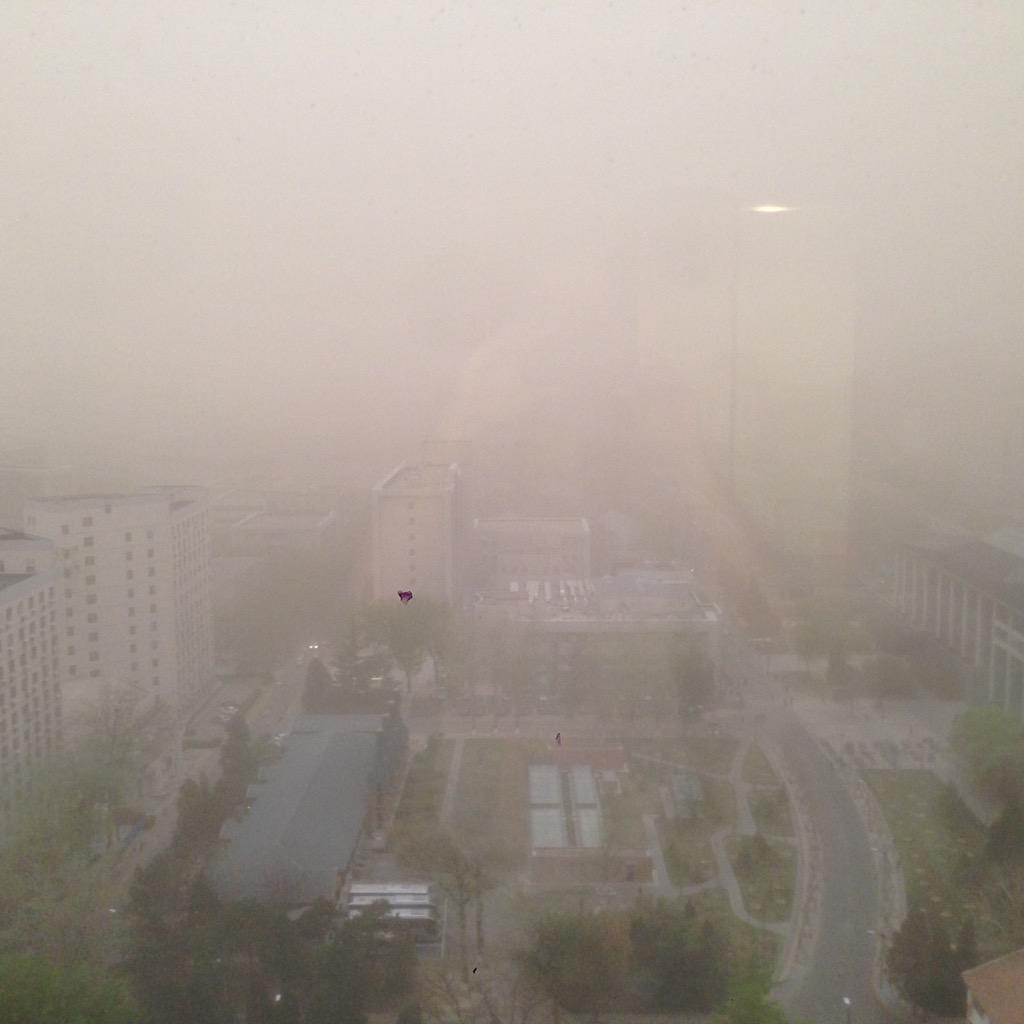
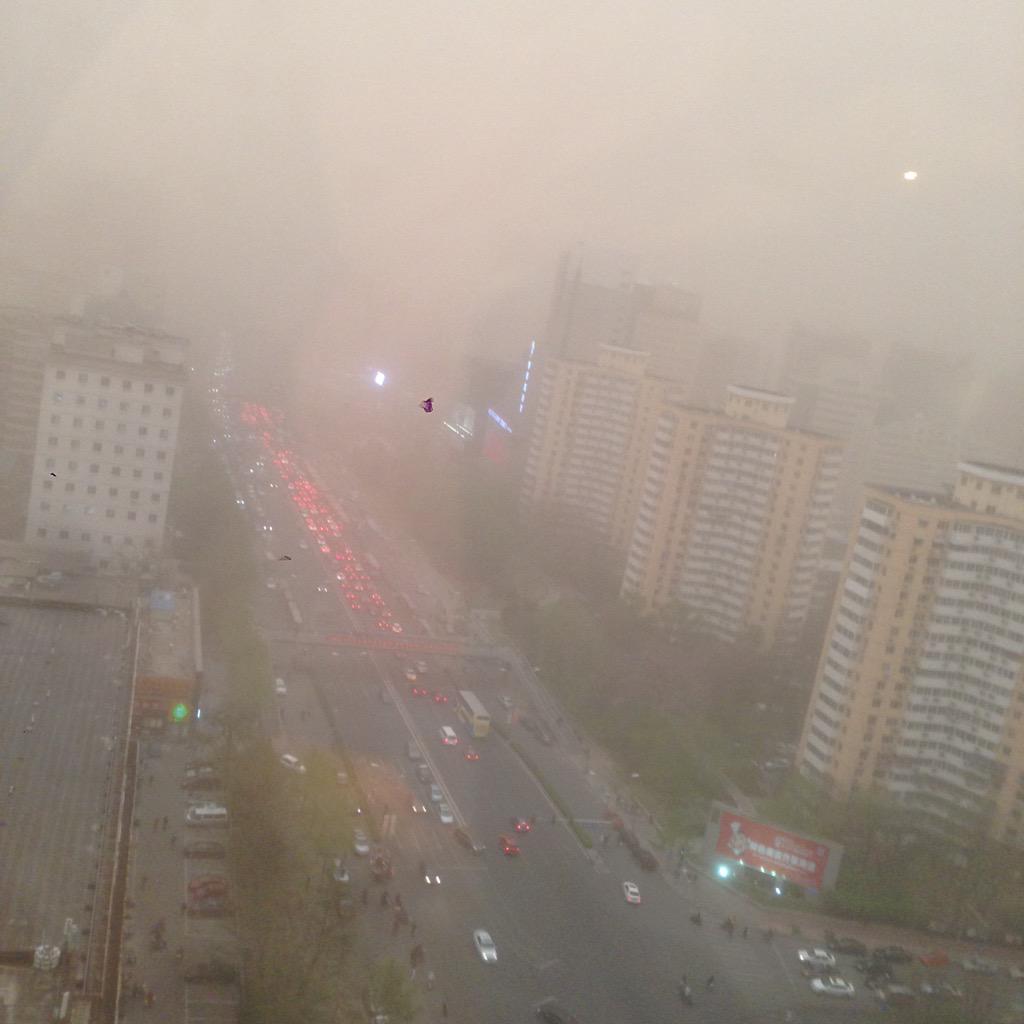
 Janis Mackey Frayer
Janis Mackey Frayer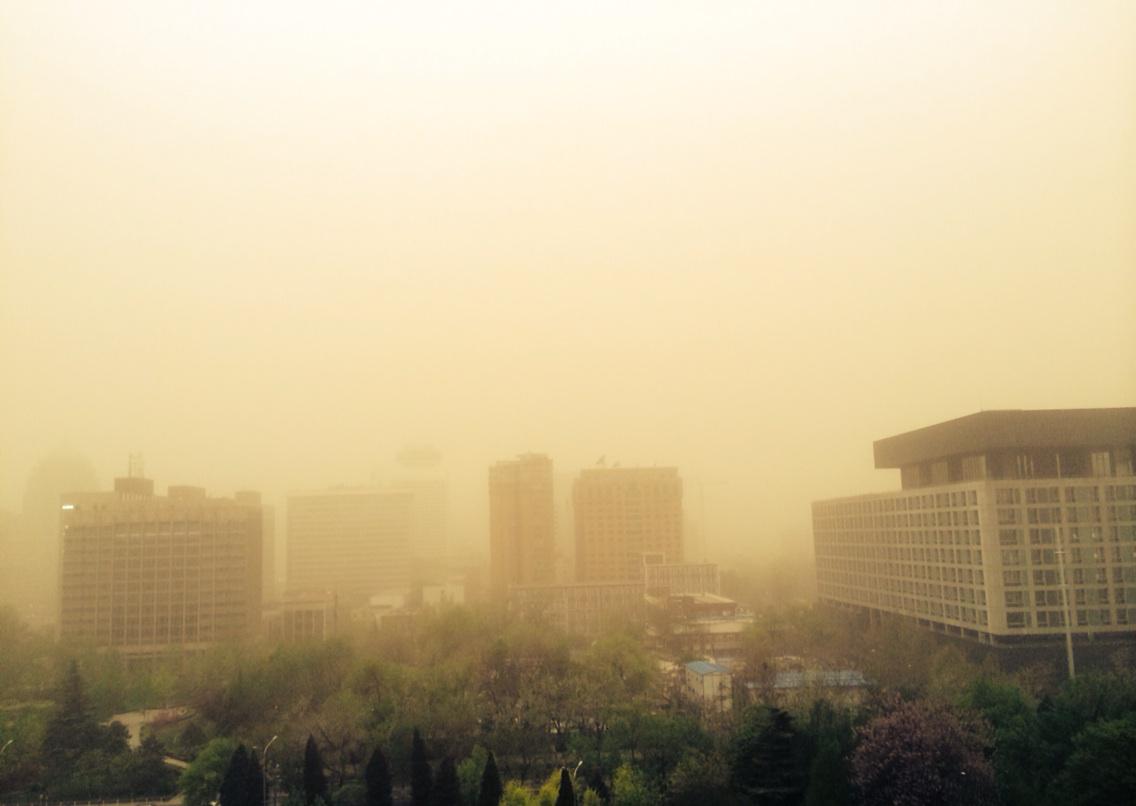







 Li Yuan
Li Yuan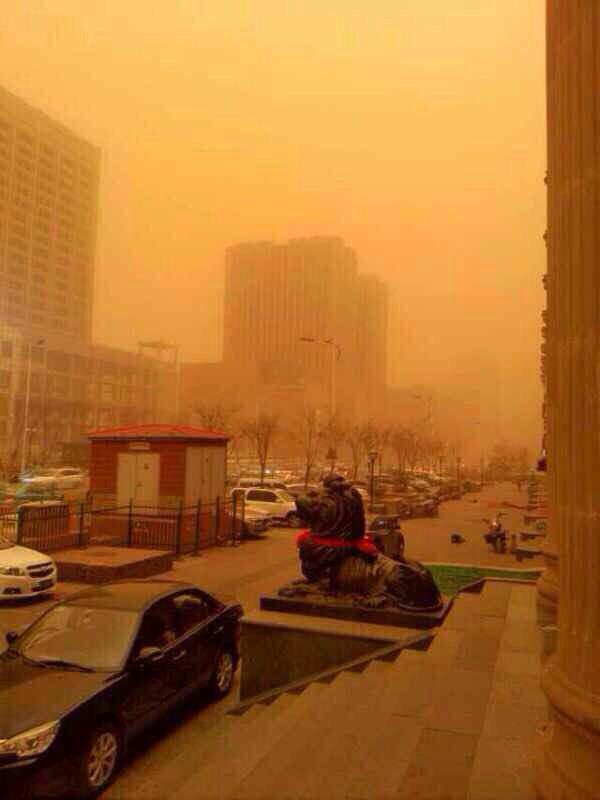
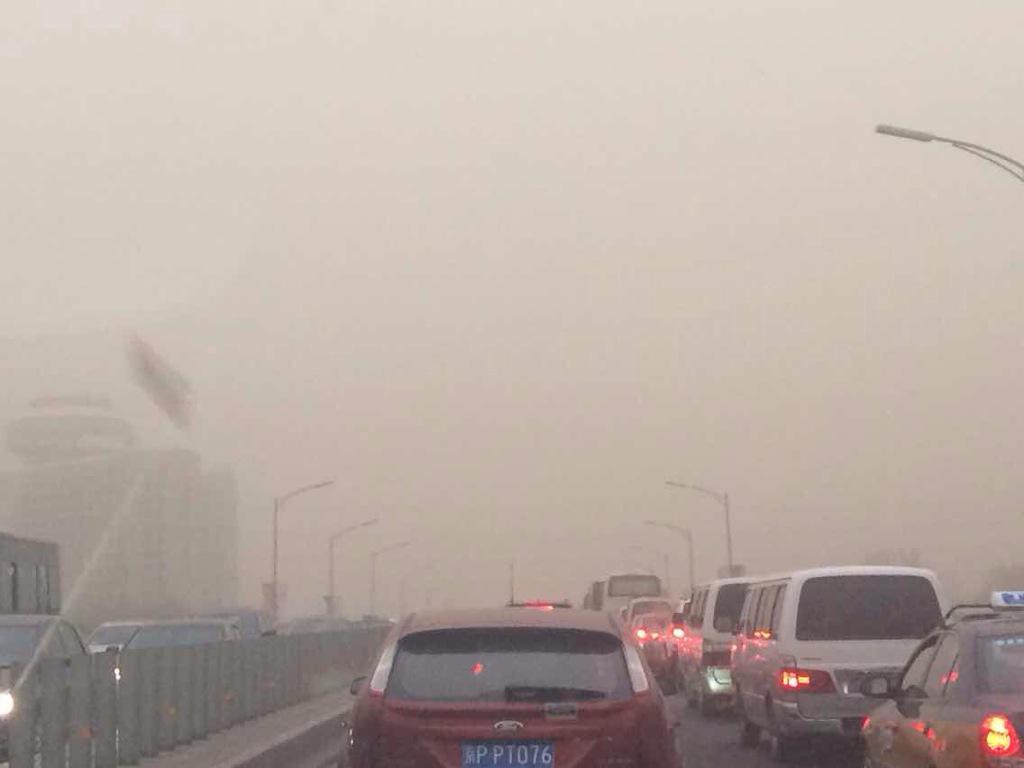
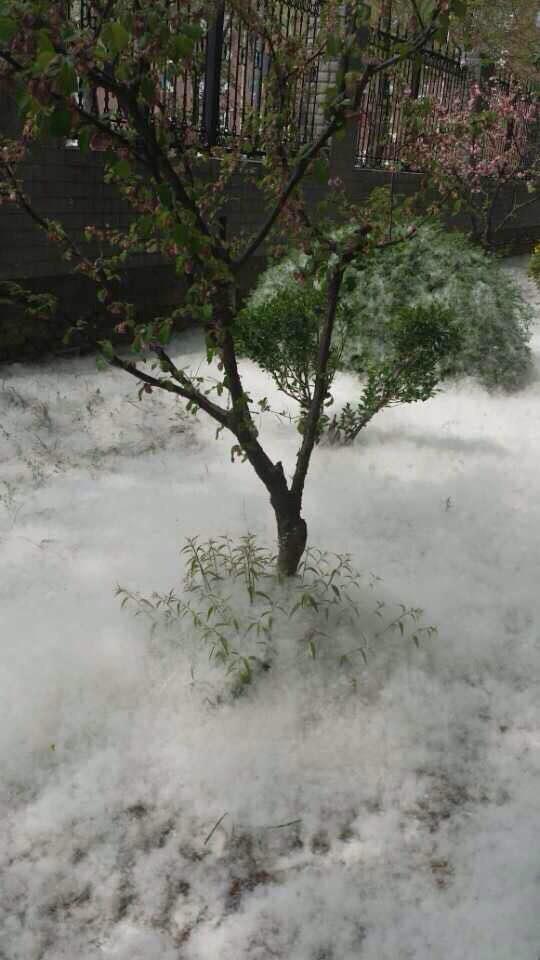







No comments:
Post a Comment
Note: only a member of this blog may post a comment.